How to plant a wildflower meadow – in gardens of all sizes
Plant a wildflower meadow in your garden to create a beautiful wildlife habitat that will be bursting with color for months on end
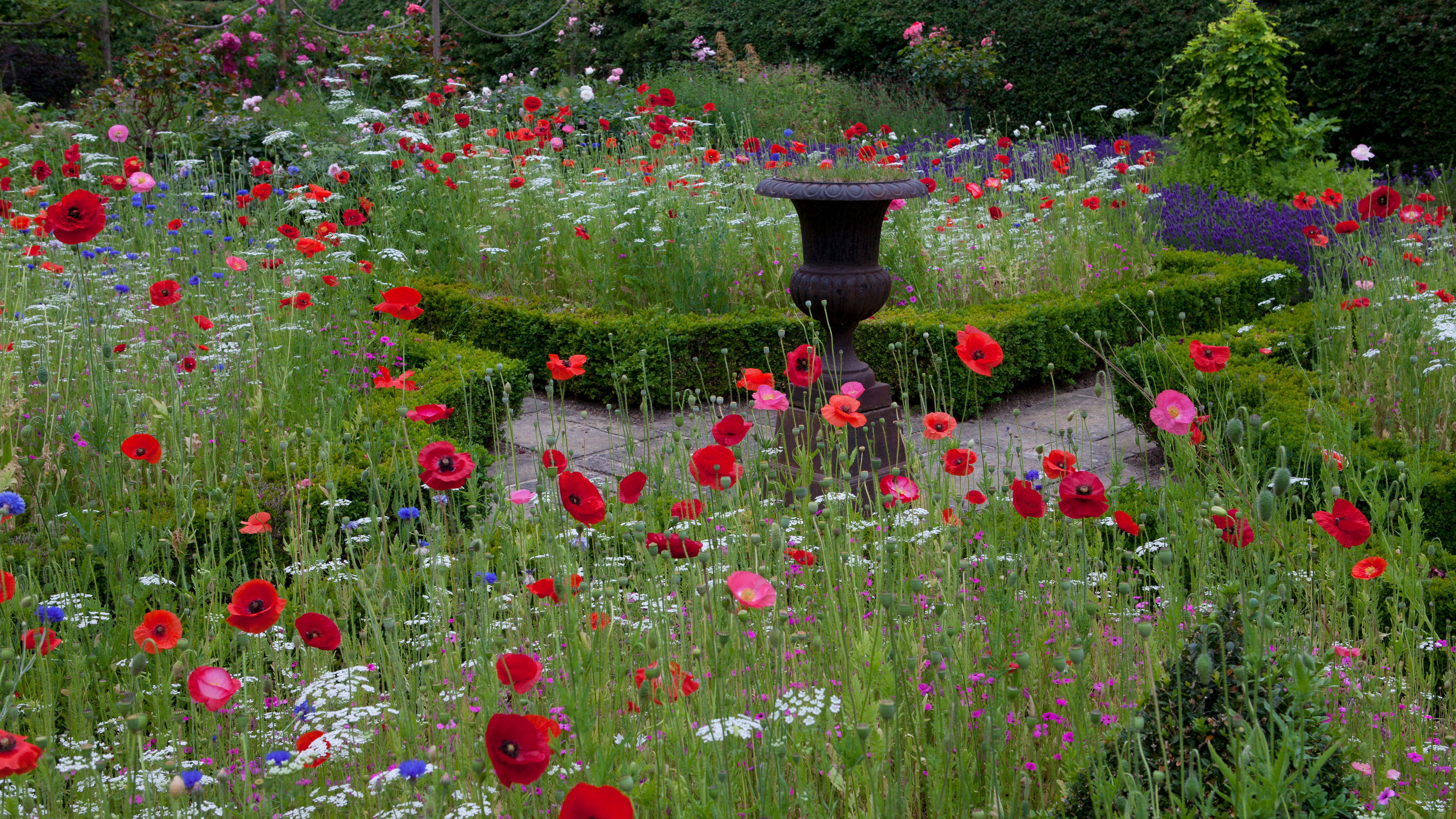

A pretty wildflower meadow is not only a lovely addition to any garden, but also provides a rich tapestry of food and shelter for bees, butterflies and other important pollinators.
You can easily create a mini wildflower meadow in your own yard as an alternative to an area of lawn, in place of a border, or contained in a parterre, which will be filled with color from spring into summer.
Wildflower meadows can work in any garden setting, whether contemporary or traditional, and yards large or small, so plan one in as part of your garden ideas and enjoy the color and wildlife it will add to your garden.
How to start a wildflower meadow
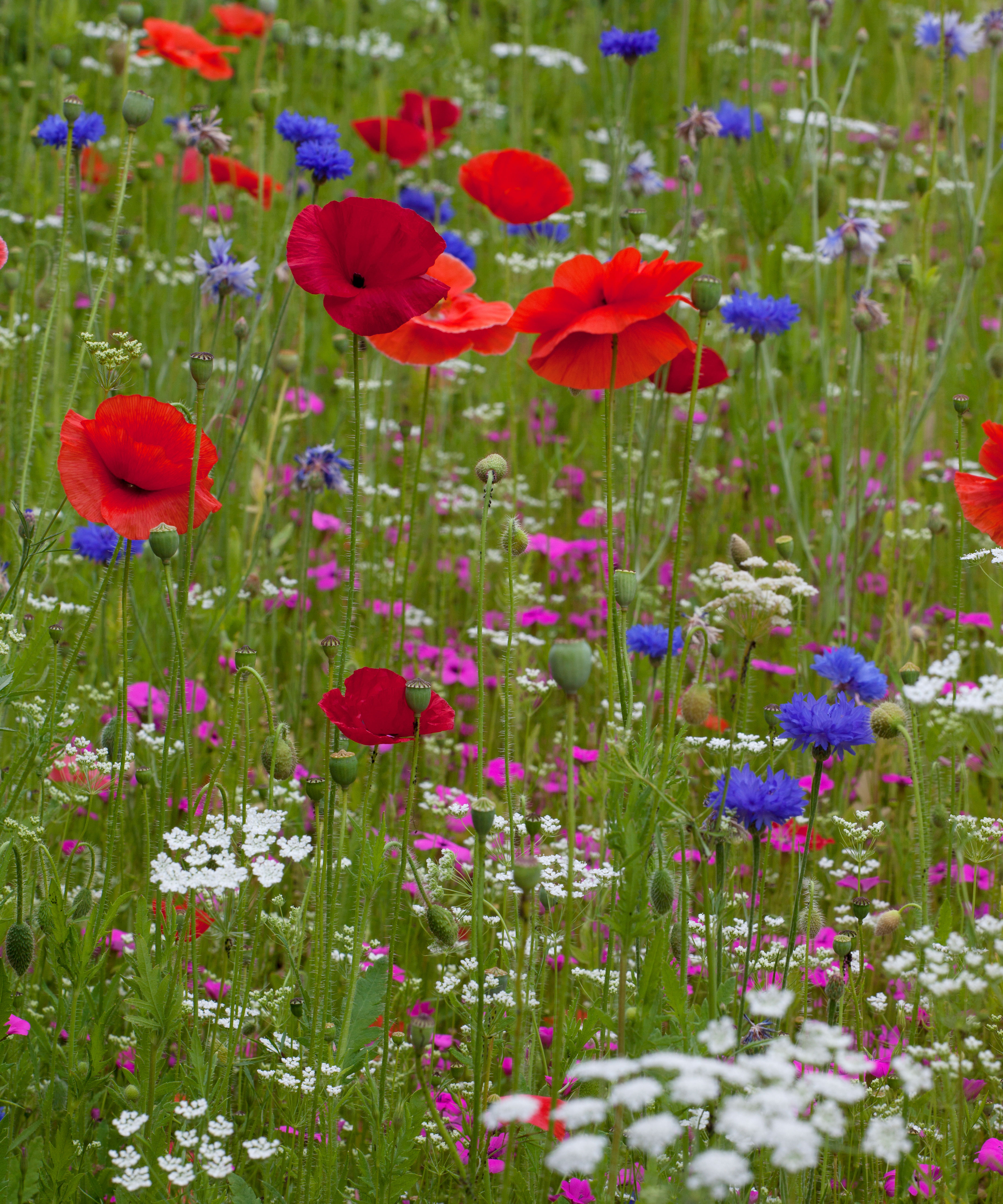
A wildflower meadow is one of the best wildlife garden ideas. You don't need a large expanse to create one and can plant a mini meadow in a corner of a smaller backyard. If you are planning your garden with a naturalistic planting design then a wildflower meadow is an obvious addition.
'We love to use wildflower meadows, even in quite small gardens. This is an instantaneous way to deliver a rich and diverse scheme of wildflowers, bulbs and grasses and is super easy to look after,' explains garden designer Jennie Herrington of The Green Room Studios.
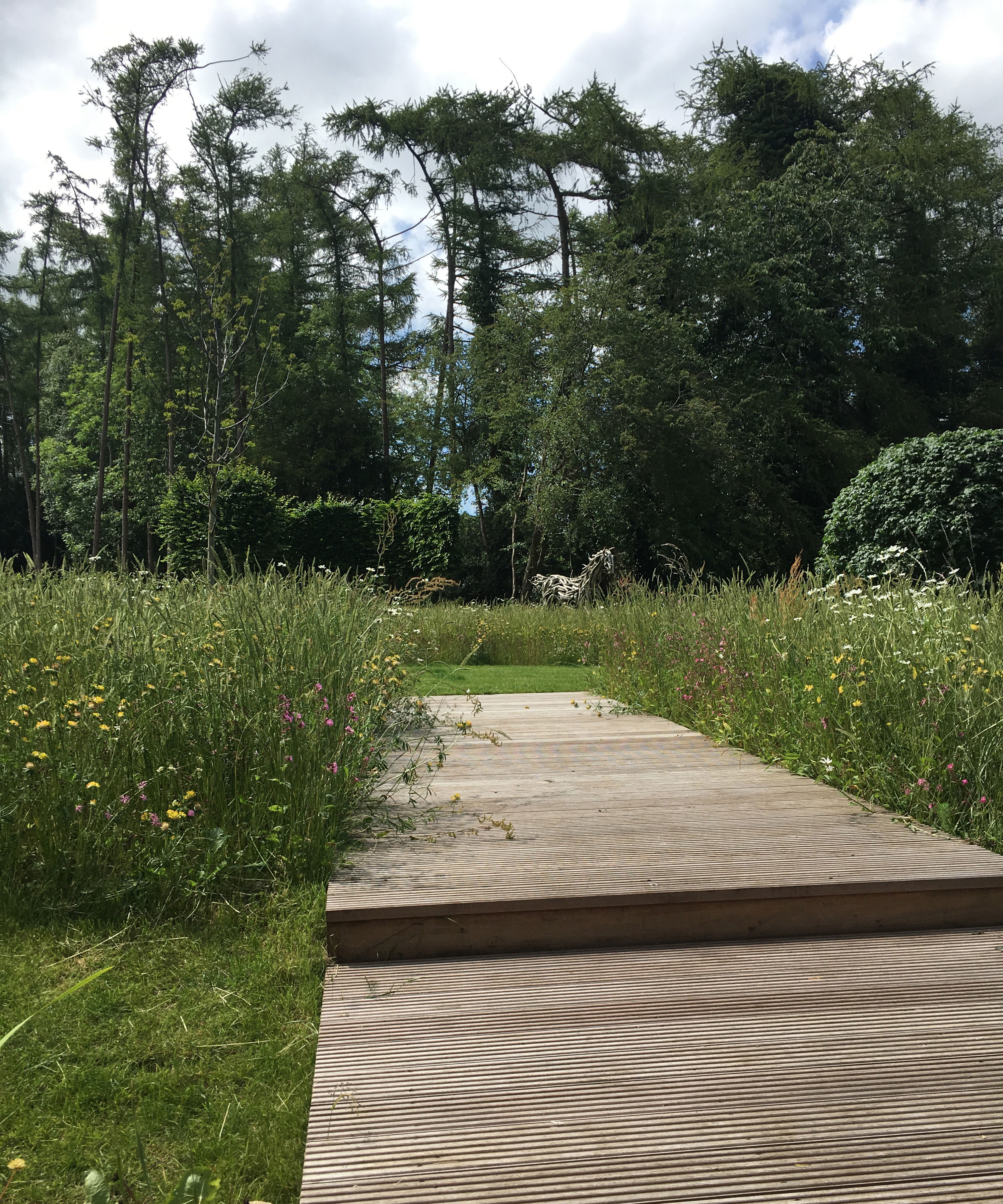
First you need to locate an appropriate site, select how to plant and prepare the area in advance.
‘The look of a wildflower meadow is so ephemeral and appealing. You could be forgiven for thinking that they are simple, but the results can be disappointing without some all-important preparation,’ explains Rob Jones, director of The Garden Design Company.
Follow this step by step guide on planning and planting.
1. Choose the type of wildflower meadow
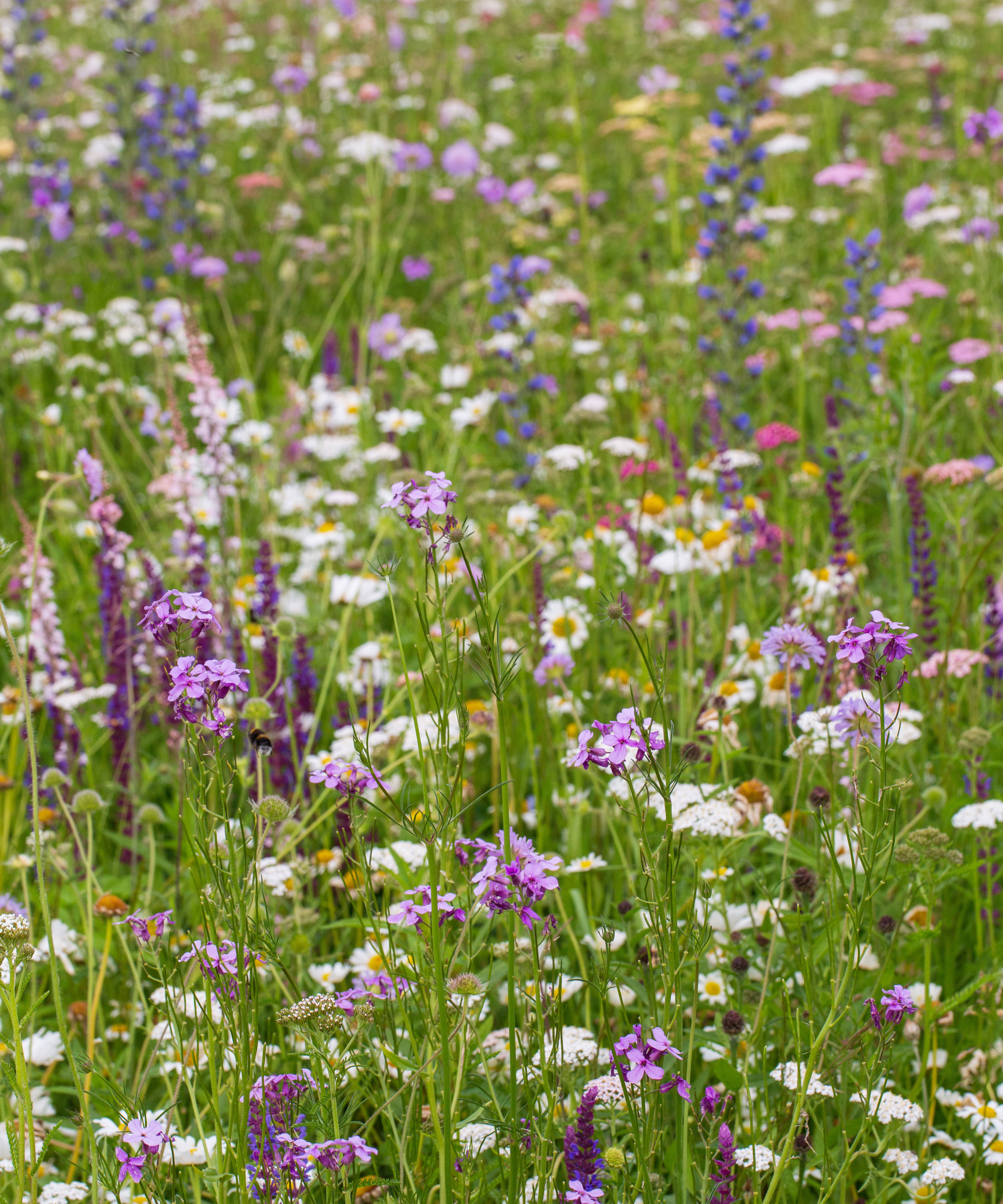
Decide whether you want to grow an annual or perennial wildflower meadow. Plan it to complement your other flower bed ideas.
‘At its most simple, an annual meadow does best in areas where nutrient levels are high but will need resowing every year,' explains Rob Jones. so might be the best choice if you are planning the wildflower meadow to replace existing flower border.
A perennial meadow will establish better on poor soil. 'They often lack those poppies and cornflowers that people yearn for, but the result is permanent, albeit the look changes from season to season and year to year,’ says Rob.
2. Identify the location for the wildflower meadow
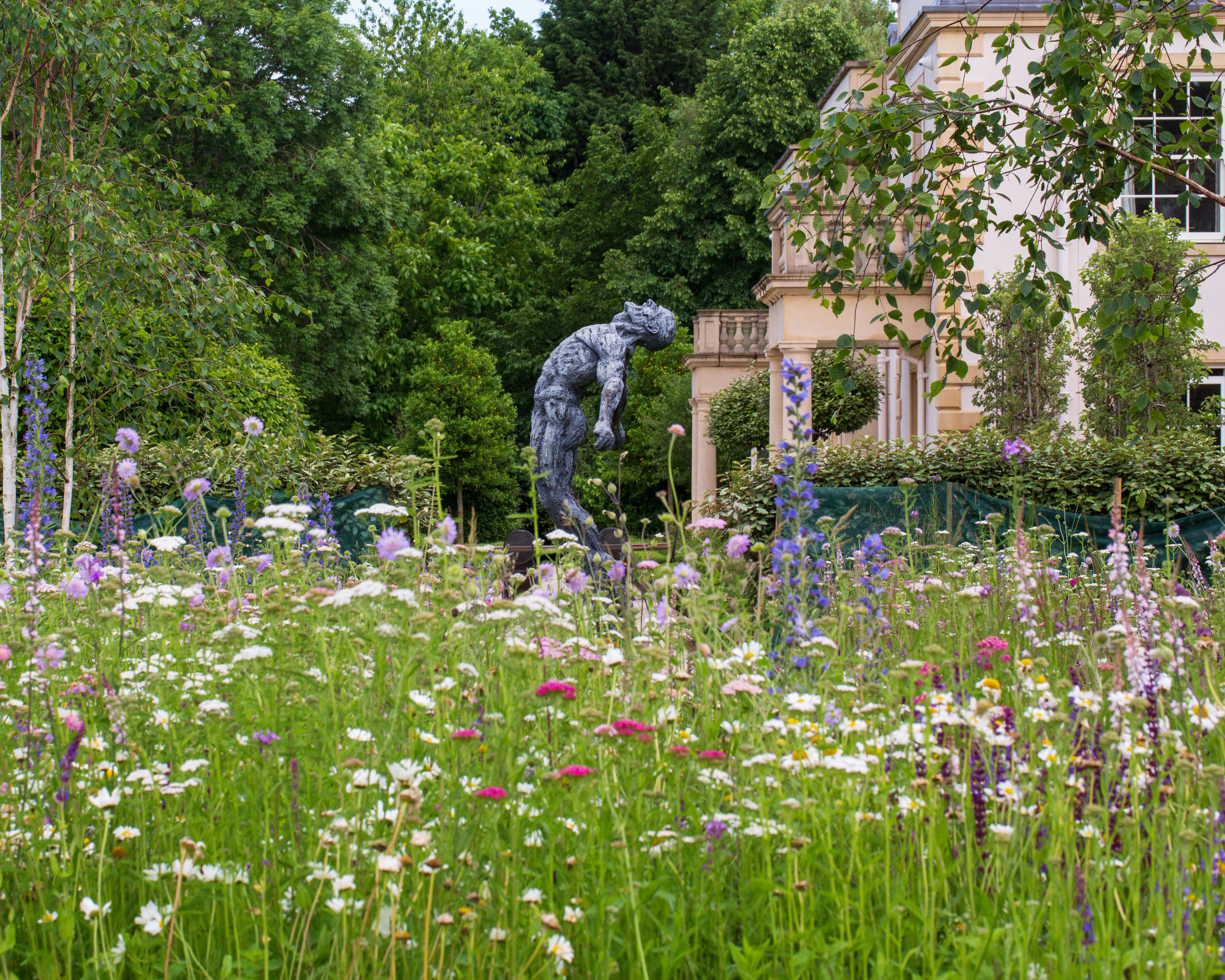
You do not need a large area to create a wildflower meadow and you can even create a modest, yet colorful and rich wildlife habitat as a small garden idea.
Planting a meadow takes more than simply letting a section of grass grow wild. The planting needs to be tailored to the conditions.
‘There are different wildflower meadow mixes to suit different situations; whether the soil is well drained or wet and boggy; the spot is in shade or sun,’ says Rob.
There are blends for dry, heavy, chalky, moist or acidic soils, in sunny, woodland, waterside and hedgerow habitats. Choosing the correct mix for the location will help it to flourish naturally – the key to a sustainable garden.
Choose between creating a large swathe of wildflowers, a mini meadow, or confine it within a parterre garden bed, where it can work wonderfully against a backdrop of low hedges or shrubs.
'You could have both wildflower meadow and perennial planting beds right up close to more formal spaces and hard landscaping. Or, if you were worried about things looking messy, then mowing a strip of grass between the meadow and the start of the formal area can look really good,' advises Jennie Herrington.
3. Decide on the planting method
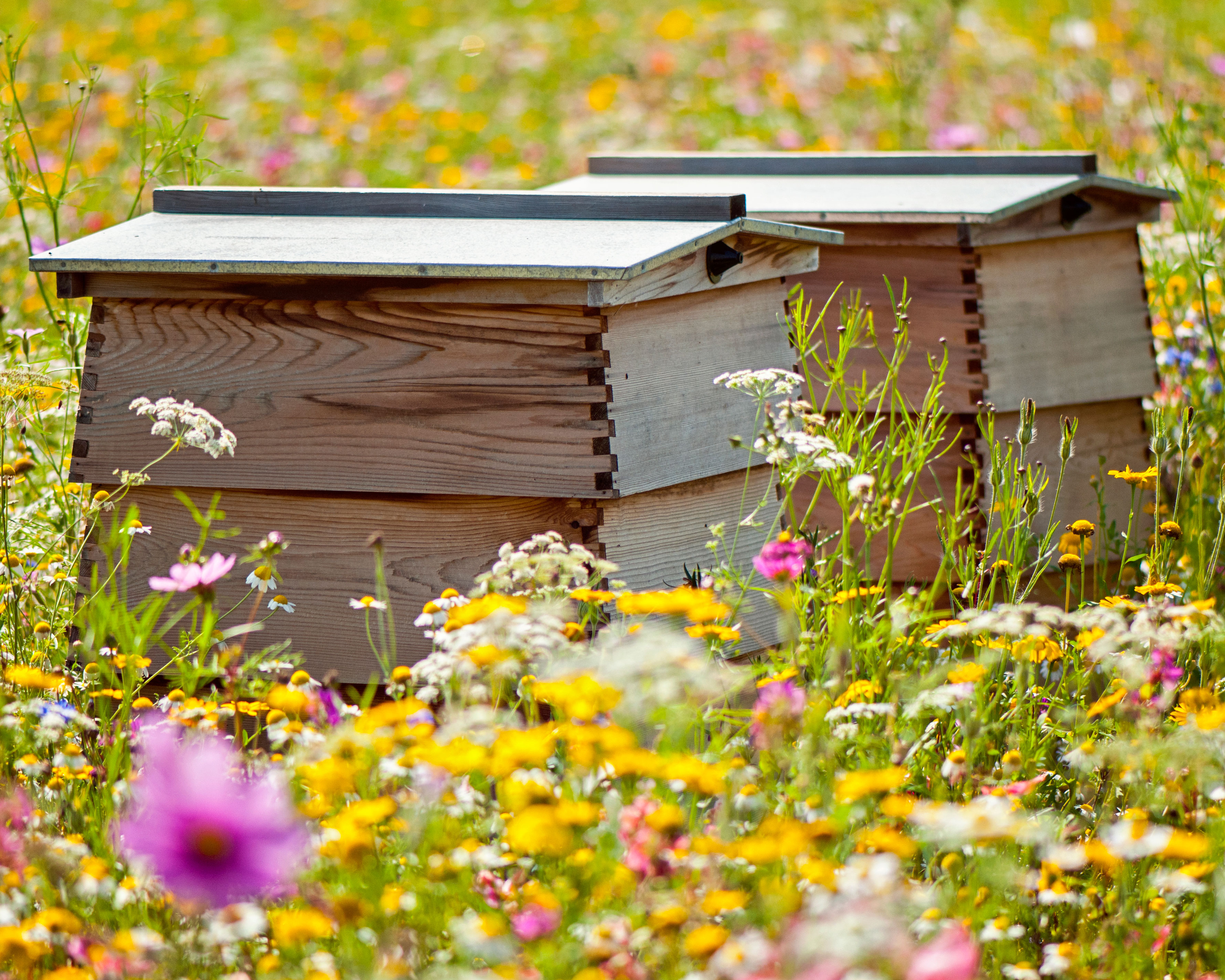
There are three different wildflower meadow planting options.
Wildflower seed: 'This is certainly the cheapest option, and the choice of mixes the largest. You can choose a grass and wild flower seed mix, or pure wild flowers. But germination rates can be variable and the time for sowing is crucial,' explains Rob Jones.
Grasses and wildflower mixes take longer to establish; they will start to look good in the second year and improve from then on.
'Ensure you only use the recommended amount of seed, however, as wildflowers do not grow well in overcrowded conditions,' explain the experts at American Meadows.
Wildflower plugs: 'These are great where you want to augment an existing wildflower meadow with specific species, such as wild carrot or vipers bugloss that extend the season of interest into early fall,' says Rob.
For a more natural effect, plant the plug together in groups, about 5 to 7 plugs per square meter.
Wildflower turf: The turf comes on short rolls and 'is an excellent – but expensive – instant option. Do research the mixes,' advises Rob.
Turf can be a good choice for where you want to create a small wildflower area in an already established garden and do not wish to wait too long for the results.
Once you have established a wildflower meadow you can learn how to create wildflower seed bombs to augment the planting year on year.
Looking at the local flora and fauna will help give clues as to what wildflowers will succeed in your garden. ‘Often a good guide is to use cultivars of plants you see growing locally along roadsides or field margins and bring them into the garden as you know they are happy in your area,’ explains garden designer Libby Russell.
4. Prepare the area for the wildflower meadow
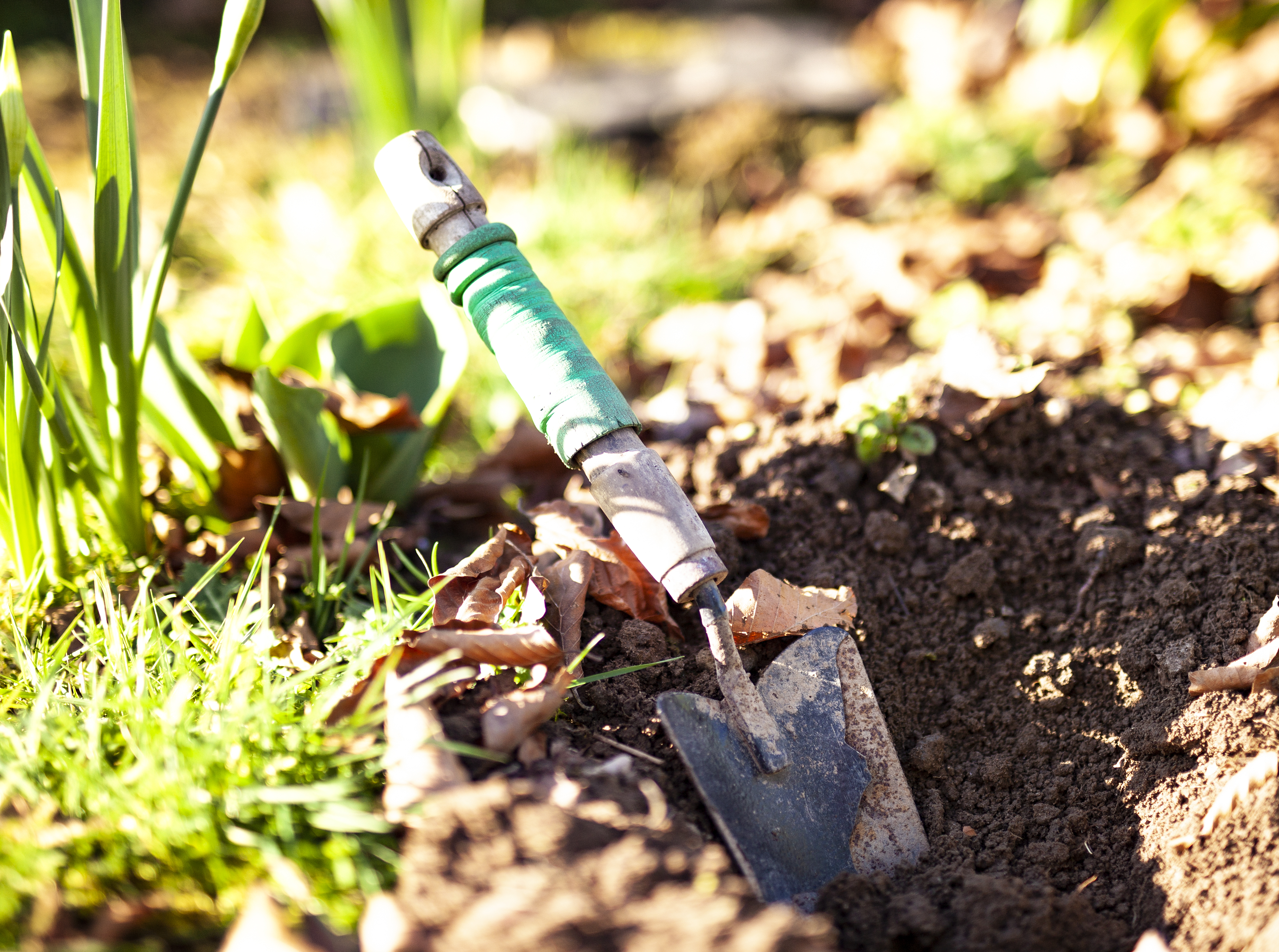
Preparation of the area is very important. 'The wildflower seeds will germinate better and have a better chance to thrive in a site without competing plants, grasses and weeds stealing nutrients and water,' explain the experts at American Meadows.
- First 'clear the soil of weeds, grasses, and other plants, to make room for the wildflower meadow to grow and thrive,' explain the experts at American Meadows
- ‘You cannot sow straight into grass, as this is too vigorous and will overwhelm any seed that does manage to germinate. At the very least the area of grass – or sward – needs to be opened up by 50 per cent to allow for germination,' explains Rob Jones.
- If docks, nettles or thistles are present then these need to be dealt with first to remove them. There are a number of methods for how to get rid of weeds. 'Spraying when in leaf with a organic herbicide will deal with these, although several applications maybe required,' explains Rob
- Loosen the soil to make root growth easier for thriving wildflowers.
- Dig or rotovate the soil, turning over the richer topsoil and burying it beneath poorer subsoil.
- Rake it level and leave for a few weeks to remove any germinating weeds.
- 'Cultivation of the soil later should be avoided as this can bring back to the surface the dormant seed bank of docks, nestles or thistles, so sowing into 2in (50mm) depth of inert green waste can provide a good medium for the wildflower meadow seed to germinate and get established,' Rob adds.
If you are using wildflower turf, then lay this in the same way as you would lay turf for a lawn, but do not add soil conditioner. You also don't need to fertilize wildflowers, but it can help in some cases where soil quality needs improving.
To prepare an area of lawn, stop feeding the lawn and mow it weekly in the first year to weaken the grass. Then add plug plants into the lawn in small groups that will hopefully naturalize over time.
5. Time the planting
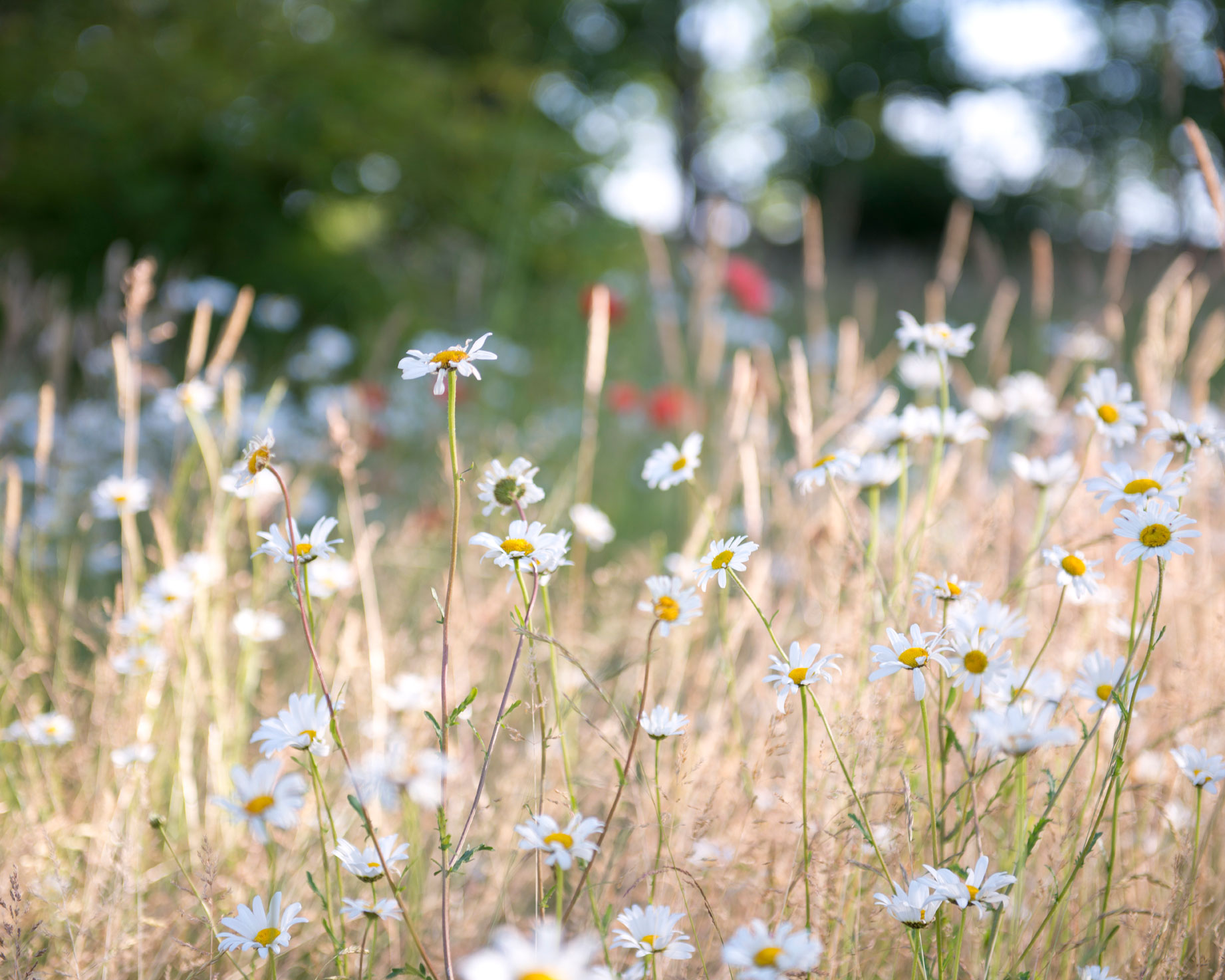
WILDFLOWER SEEDS
The best time to sow a wildflower meadow will depend on the climate in the area where you live.
Fall planting is best for areas with cold winters, and the seasonal rains encourage germination.
'Sow wildflower seeds when the soil temperatures have cooled to below 45°F (7°C). The seeds will lie dormant through winter and sprout in spring when soil temperatures warm up to 55-70°F (12–21°C),' explain the experts at American Meadows.
'Sowing in fall in the UK also allows you to add yellow rattle; this is a parasitic annual that weakens the grass, so allowing the wildflowers the chance to flourish,' explains Rob Jones.
Early spring planting is best for warmer regions, or a good second best for colder areas. Wait until all danger of frost has passed before sowing the seeds.
Sowing just before a long hot dry summer should be avoided.
See the pack details for coverage rates as they can vary greatly between different species and mixes. to ensure even coverage sow the seeds in different directions, both lengthways and widthways. 'We recommend mixing 1 part wildflower seed with 8-10 parts clean, dry sand,' say the experts at American Meadows.
WILDFLOWER PLUG PLANTS
These can be planted from mid August through to May, depending on the climate where you live.
WILDFLOWER TURF
It is possible to lay wildflower turf year round, although spring is usually the best time.
6. Maintain the wildflower meadow
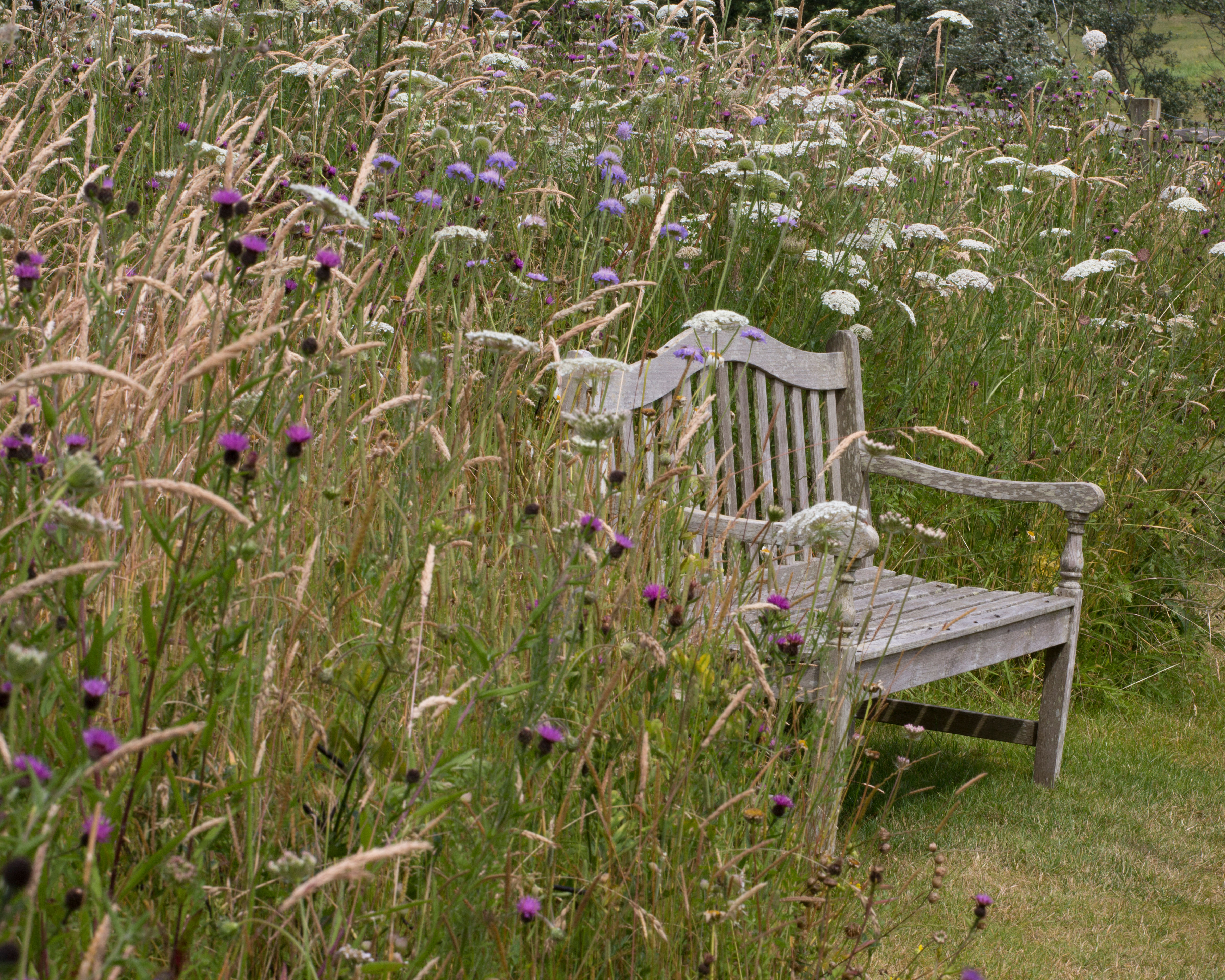
'Perennial meadows can be cut once or twice in the first spring – assuming you have no bulbs – to encourage thickening up. If you do cut early, then a good guide is stop cutting six weeks before you want the meadow to flower,' explains Rob Jones.
'Meadows must be cut in late fall and all the clippings removed to avoid the nutrient level increasing. Leave the clippings 2 two weeks to allow the seeds to set for next year, but I often leave my meadows standing until late November to allow the birds to forage on the seeds,' adds Rob.
The experts at American Meadows, however, encourage leaving meadows standing all winter 'as an important habitat for local wildlife and pollinators.'
'Mow the area down to 3” or 8” with a weed trimmer, brush hog, or mower set on a high setting. Rake the clippings and debris away in spring to make way for new growth,' they add.
Annual meadows will need some repeated sowings; others will improve over time with many plants self-seeding to reinforce the natural effect.
Ways to enhance a wildflower meadow
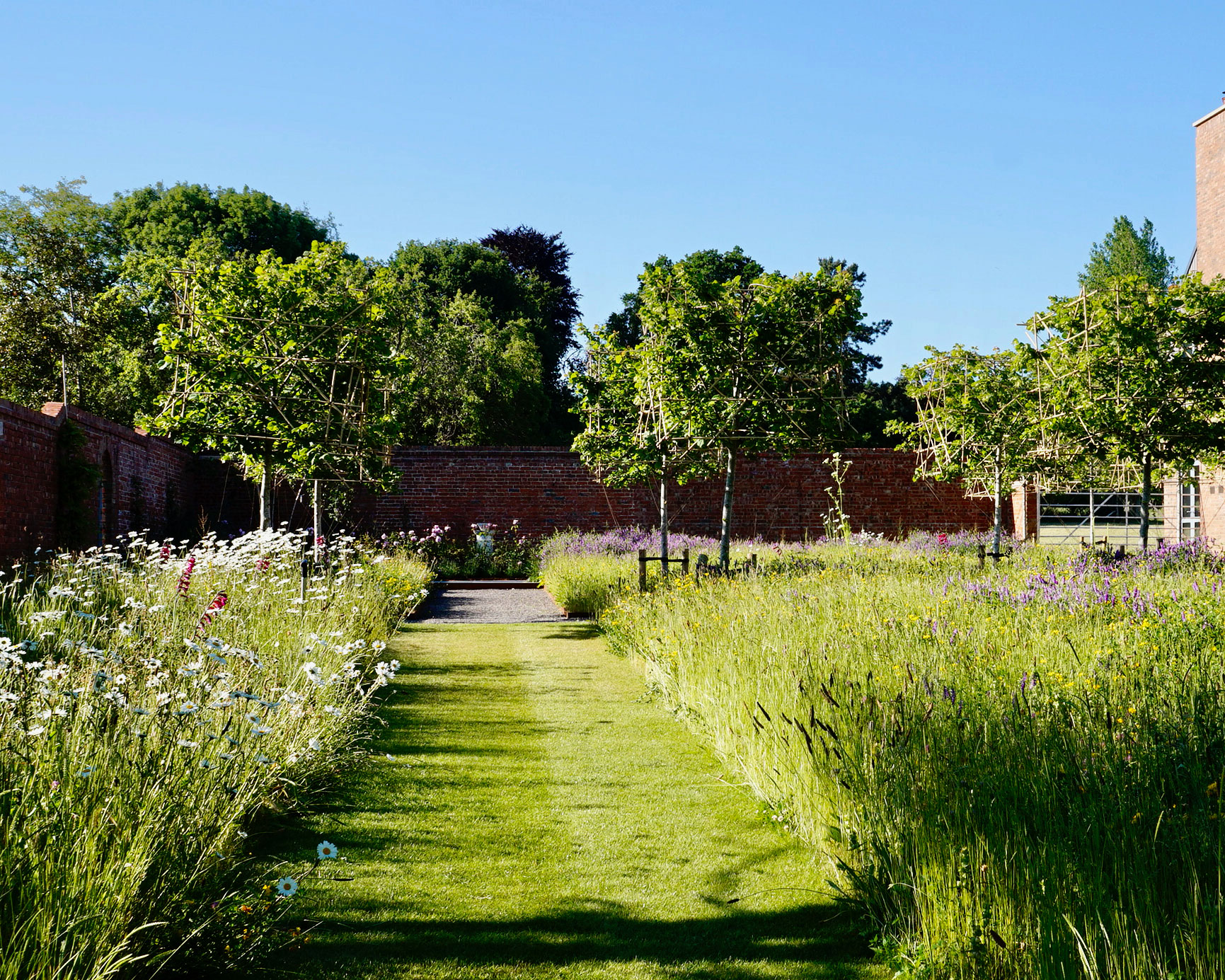
Plant bulbs: The addition of naturalized bulbs to wildflower meadows, such as snowdrops, aconites, species tulips and camassias, increase the season of interest.
In the garden design above by David Loy of Your Garden Design, 'large squares of grasses and wildflowers, made up of a range of native species found locally to the site, were underplanted with large numbers of species bulbs including various species of narcissus, tulip and Fritillaria meleagris, which have rapidly naturalized through the planting,' explains David.
Cut paths: You can also cut garden paths through the meadow to create circulation routes and introduce seats, benches and logs to sit on and take in the sights and sounds.
'Mown paths through wildflower meadows can keep things in check and are great to wander through on an evening,' explains Jennie Herrington.
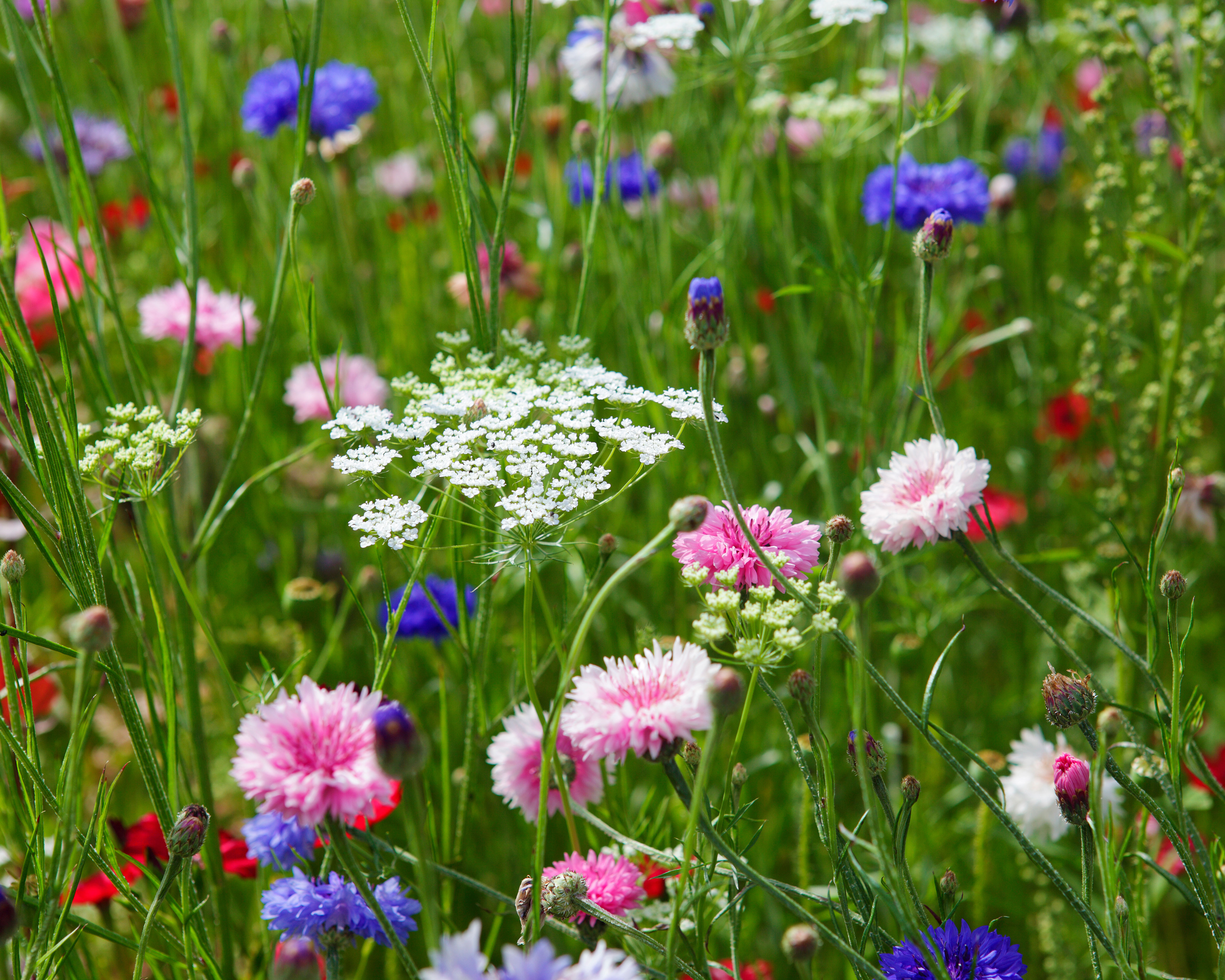
What is a wildflower meadow?
A wildflower meadow is an area of grass where wildflowers grow – as opposed to a bed of poppies or cornflowers, for example.
There are different varieties of wildflower meadow that you can plant depending on if your soil is fertile or poor.
Can I scatter wildflower seed on grass?
It is not recommended to scatter wildflower seed on grass. Grass seed is a vigorous grower and will out-compete the wildflower seeds, preventing them from germinating or thriving.
'Anyone who has tried scattering seed on grass has been sorely disappointed when their wildflowers don’t come up,' say the experts at American Meadows.
Sign up to the Homes & Gardens newsletter
Design expertise in your inbox – from inspiring decorating ideas and beautiful celebrity homes to practical gardening advice and shopping round-ups.
Rachel is senior content editor, and writes gardening content for homesandgardens.com, Homes & Gardens magazine, and its sister titles Period Living Magazine and Country Homes & Interiors. She has written for lifestyle magazines for many years, with a particular focus on gardening, historic houses and arts and crafts, but started out her journalism career in BBC radio, where she enjoyed reporting on and writing programme scripts for all manner of stories. Rachel then moved into regional lifestyle magazines, where the topics she wrote about, and people she interviewed, were as varied and eclectic as they were on radio. Always harboring a passion for homes and gardens, she jumped at the opportunity to work on The English Home and The English Garden magazines for a number of years, before joining the Period Living team.
-
 Emily Blunt gifted Cillian Murphy this $545 pillow – she's 'obsessed' with these luxury pillows, and frankly, so are we
Emily Blunt gifted Cillian Murphy this $545 pillow – she's 'obsessed' with these luxury pillows, and frankly, so are weThe Oppenheimer stars sleep on this ultra-luxe goose down pillow – here's why we love it – plus our affordable alternatives from $35
By Sophie Edwards Published
-
 The great bedding debate: top sheet vs no top sheet − which side are you on?
The great bedding debate: top sheet vs no top sheet − which side are you on?I asked an expert panel of bedding designers whether you really need a top sheet to keep clean and cool or if it's just another ploy to make you spend money
By Emilia Hitching Published